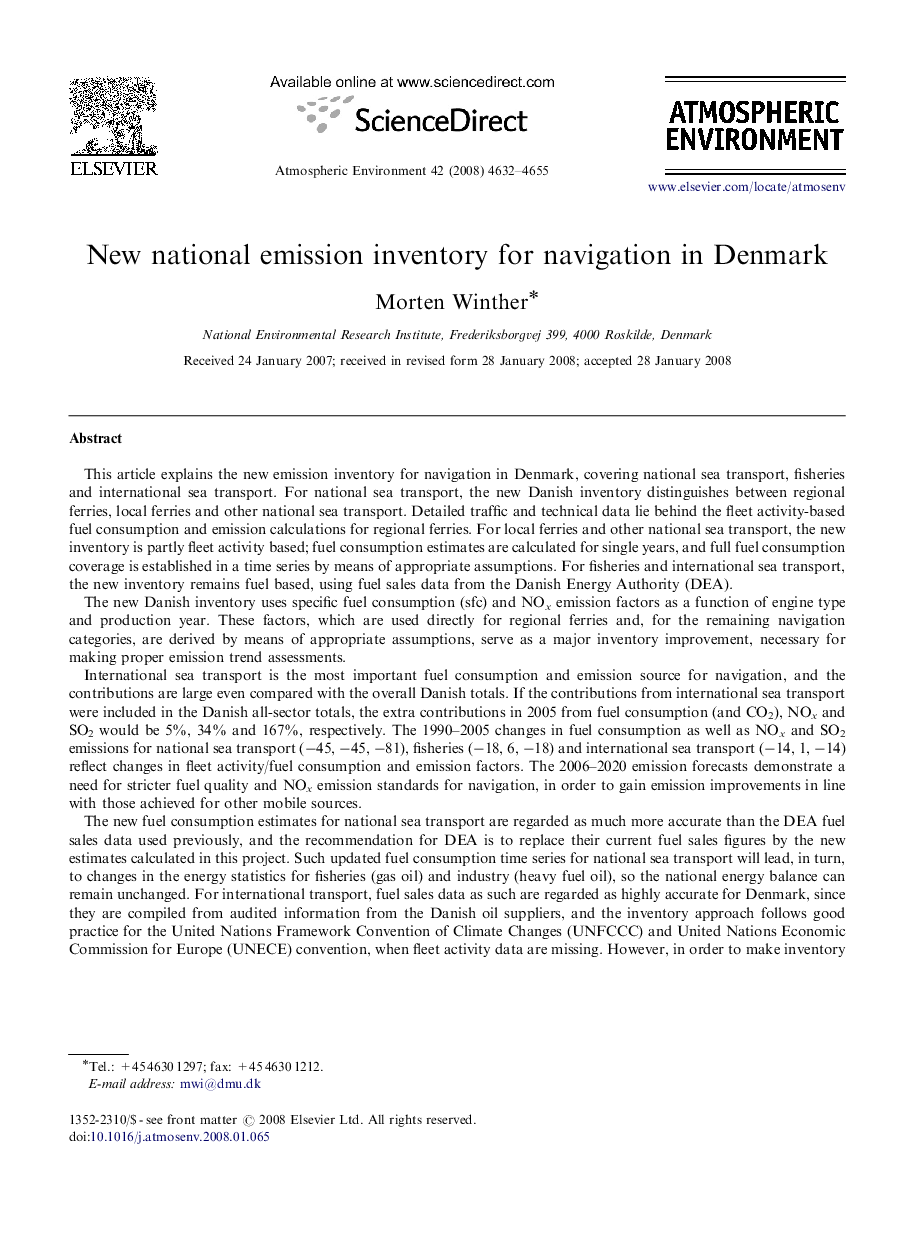| کد مقاله | کد نشریه | سال انتشار | مقاله انگلیسی | نسخه تمام متن |
|---|---|---|---|---|
| 4442423 | 1311151 | 2008 | 24 صفحه PDF | دانلود رایگان |

This article explains the new emission inventory for navigation in Denmark, covering national sea transport, fisheries and international sea transport. For national sea transport, the new Danish inventory distinguishes between regional ferries, local ferries and other national sea transport. Detailed traffic and technical data lie behind the fleet activity-based fuel consumption and emission calculations for regional ferries. For local ferries and other national sea transport, the new inventory is partly fleet activity based; fuel consumption estimates are calculated for single years, and full fuel consumption coverage is established in a time series by means of appropriate assumptions. For fisheries and international sea transport, the new inventory remains fuel based, using fuel sales data from the Danish Energy Authority (DEA).The new Danish inventory uses specific fuel consumption (sfc) and NOx emission factors as a function of engine type and production year. These factors, which are used directly for regional ferries and, for the remaining navigation categories, are derived by means of appropriate assumptions, serve as a major inventory improvement, necessary for making proper emission trend assessments.International sea transport is the most important fuel consumption and emission source for navigation, and the contributions are large even compared with the overall Danish totals. If the contributions from international sea transport were included in the Danish all-sector totals, the extra contributions in 2005 from fuel consumption (and CO2), NOx and SO2 would be 5%, 34% and 167%, respectively. The 1990–2005 changes in fuel consumption as well as NOx and SO2 emissions for national sea transport (−45, −45, −81), fisheries (−18, 6, −18) and international sea transport (−14, 1, −14) reflect changes in fleet activity/fuel consumption and emission factors. The 2006–2020 emission forecasts demonstrate a need for stricter fuel quality and NOx emission standards for navigation, in order to gain emission improvements in line with those achieved for other mobile sources.The new fuel consumption estimates for national sea transport are regarded as much more accurate than the DEA fuel sales data used previously, and the recommendation for DEA is to replace their current fuel sales figures by the new estimates calculated in this project. Such updated fuel consumption time series for national sea transport will lead, in turn, to changes in the energy statistics for fisheries (gas oil) and industry (heavy fuel oil), so the national energy balance can remain unchanged. For international transport, fuel sales data as such are regarded as highly accurate for Denmark, since they are compiled from audited information from the Danish oil suppliers, and the inventory approach follows good practice for the United Nations Framework Convention of Climate Changes (UNFCCC) and United Nations Economic Commission for Europe (UNECE) convention, when fleet activity data are missing. However, in order to make inventory upgrades and to support Danish policymakers in bunker emissions allocation, fleet activity-based estimates calculated in a further project would be useful.
Journal: Atmospheric Environment - Volume 42, Issue 19, June 2008, Pages 4632–4655